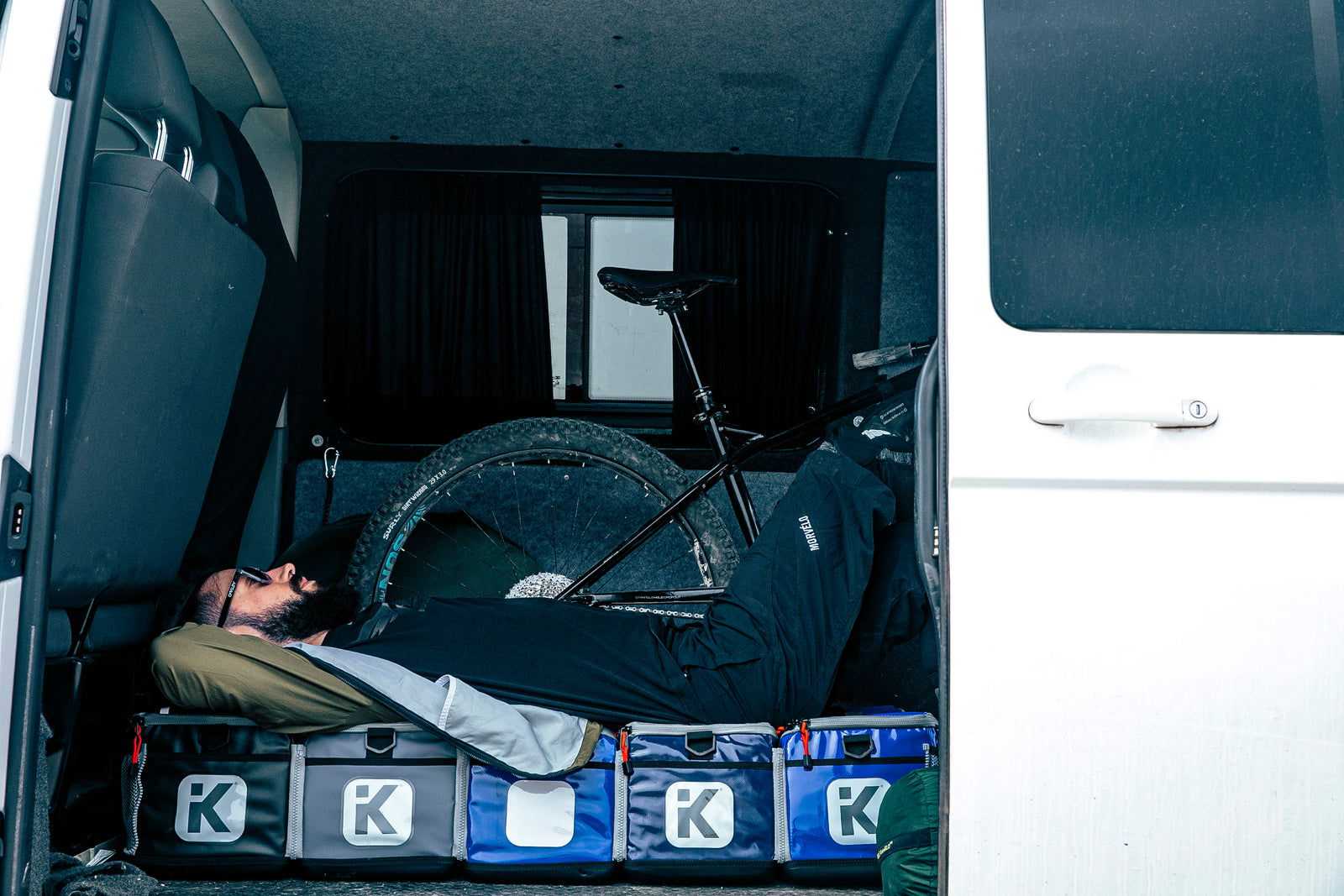
Blog | KitBrix at the Start Gate
January 05, 2018 8 min read 1 Comment
How did we get in to BMX?
It's a pretty short story. I wanted to spend more time with my Nephew (6 years old) so we looked at the local BMX club as complete beginners. 4 months later my Nephew is racing in the Deep South Winter Series on the South Coast, which we now support with prizes and where we attend races each month. We are hooked.
Meeting the riders As part of our introduction to the BMX scene we were very lucky to meet a great llittle rider named Luke 'The Nuke' Willcocks and his family.
Steve Willcocks: “We wanted to put Luke in to an environment with other children of a similar mentality. We thought the local BMX club would be fun, as well as giving Luke the opportunity to excel, with his competitive streak. He took to it immediately.”
Steve's approach to the sport and to his family resonated with us as a company and for me personally as an Uncle of an 'active' 6 year old. BMX immediately represented an opportunity for me to spend more time with my Nephew.
We decided to interview Luke and his Father for our KitBrix Stories just prior to attending the World Championships in the USA. At such a young age, Luke carries himself well, beyond his years, and whatever Luke decides to do in the future he will undoubtedly get great support from his family. Read more HERE
The BMX Scene Having been setup in the road cycle industry with KitBrix for the past few years, we are well versed to the bigger road races, track days and understanding how the teams work on and off the road.
Our first introduction to the BMX scene was very different. Turning up to our first ever track practice brought about emotions of excitement and nervousness. Walking my Nephew to the track I wasnt to sure who was holding who's hand! Would we fit in? What happens if he falls off? Or doesnt like it? Are we cool enough for this?
My concerns very quickly disappeared as we were welcomed with open arms and put straight on the track. The commaraderie and raw spirit in the BMX scene is intoxicating and whatever standard, age or background, everyone is welcome to experience the thrill of bike riding. I came away thinking that we would fit as a brand and as a family.
Can I get involved? BMX is more accessible that you might think, with clubs and tracks throughout the country offering taster and coaching sessions for riders of all ages and abilities. Bikes with as small as 12 inch frames are available for tiny tots, while the masters’ age group is more popular than ever. BMX riders can be tall or short, stocky or skinny but what they all have in common is a passion for their sport.
Turning up on Day One on the track, we didn't have a BMX bike, body armour, or even a helmet but these were lent to us to ensure we could have a good first session. After 13 laps of the circuit, William (my Nephew) was tired, sweaty, with a beaming smile (see below) that said enough."When can we come again?" he asked.
Where can I find my club? BMX racing take place on a growing number of purpose-built outdoor and indoor tracks throughout the country. Made from compacted dirt and tarmac, tracks are around 400-metres long and feature a large starting ramp, banked (bermed) corners and a variety of jumps including tabletops, gap jumps and rhythm sections.
A list of BMX tracks can be found on the BMX website or on the PDF download HERE
Facebook is also a great source of information and/or the BMX chat groups where the community will no doubt point you in the right direction.
KitBrix are proud sponsors of the Deep South Winter Series | KitBrix bags are provided to winning riders and for individual efforts. KitBrix and the team will be present at all races as part of their sponsorship, providing shelter and seating area for any one who needs it under their 6 x 3 awning. If you have a question for KitBrix and/or would like to know more, please contact at bmx@kitbrix.com or tag us on social @kitbrix #keepittogether
Images from our family BMX days in 2017
Glossary of BMX Terms
Axle: The shaft on which the wheel revolves.
Bar Spin: While in the air, the rider leans backwards, one hand is removed from the bars, the other hand spins the bars, then the rider catches the bars and rides away.
Bead: The outside edge of the tire, which is stiffened by a wire.
Berm: An embankment on a track built up on the outside of a turn to create a banked curve.
BMX: Abbreviation for Bicycle Motocross. BMX indicates a style of bike and a kind of race or competition.
Bottom Bracket: The mechanism at the bottom of the bicycle frame, which holds the spindle and cranks.
Brake Shoe: A rubber pad, which stops the bike by pressing on the rims, creating friction.
Brakes: Any bicycle braking system which works by opening and closing two brake shoes on the rim in a clamping motion, like jaws.
Brake Lever: A lever mounted on the handlebars used for activating the brake by pulling a cable.
Cable: Steel wire braided into cables and sometimes with plastic coiling. Cables are used to connect the brake lever to the brake.
Caliper Brakes: A braking system that is centrally mounted on the frame. Two arms with a spring mechanism to provide the movement at the brake pads to the rim.
Can Can: One foot is taken and crossed over the top tube.
Cantilever Brakes: A dual mounted brake where the brake spring is connected to the post.
Chainstays: The part of the bicycle frame that runs parallel to the chain. It connects the bottom bracket to the rear dropouts.
Chainwheel: A one-piece front gear. The chainwheel is attached to the cranks.
Crank: The metal arm to which the pedals are attached.
Down Tube: The part of the bicycle frame which slants downward at an angle. It connects the head tube to the bottom bracket.
Dropouts: Small slotted openings, which holds the front and rear wheel axles. On many bikes, the dropouts do not appear to be separate parts. They connect the chain stays to the seat stays, and are also welded to the ends of the front forks.
Endo: When the front wheel of a bike is stopped and the rider falls over the front handlebars.
Feeble Grind: The front wheel of the bike is on top of an obstacle such as a ledge, while one back peg grinds along the top of the obstacle.
Flare: A back flip and 180 degree rotation in the same motion.
Flatspin: The rider spins on a horizontal axis.
Fork: The double pronged section of the bike, which holds the front wheel.
Freewheel: A one-piece rear gear that allows the rider to back pedal. Bearings are built in.
Gear Ratio: A number, which indicates the relationship between the two gears and tells how much work a particular combination of gears will do.
Gusset: A triangle of reinforcing steel located between the top tube and down tubes. A brace that reinforces frame tubing junctions.
Gyro: A device that enables you to spin the handlebars without brake cable interference.
Headtube: Short vertical tube at the very front or “head” of the bike. The front fork and headset fits inside the head tube.
Holeshot: Taking the lead position out of the starting gate and going into the first turn.
Hub: Cylinder that holds the axle of each wheel.
Linear Brake: A particular type of brake that utilizes a side or linear pull system in which requires a v-type or linear lever. This system offers the most braking force available. Generally used by racers.
Lookdown: The rider leans away from the direction they are turning. At this time the pedals are rotated 45 degrees, the bars are turned, and it appears the rider is standing up on the bike.
Manual: The act of riding a wheelie without pedaling.
Moto: A single race heat.
Motocross: Originally a cross-country motorcycle race. The term is now also used to describe BMX races held on dirt tracks.
Nac Nac: The rear of the bike is swung to the right and the right foot is swung far behind the rider over the top tube.
No Footer: Both feet are taken off the pedals and stuck out to the side.
No Footed Can Can: Both feet are taken off the pedals and stuck out to the same side.
Nothing: While in the air, the rider takes hands and feet off the bike at the same time.
One Footer: The rider takes one foot off the pedal and kicks it out to the side.
One Hander: One hand is taken off the handlebar.
Rhythm Section: A series of jumps or rollers back to back on a track that pose as an obstacle.
Roller: An obstacle on a track that is rolled over as opposed to being jumped.
Saddle: Another name for a bicycle seat.
Seat Stays: Section of the frame, which runs from the top of the seat tube to the rear dropouts.
Sew-Ups: A type of tire, which is actually sewn around the tube. Also called a tubular tire.
Seat Post: The tube, which holds the seat and goes into the frame.
Stem: The part connected to the fork that holds the handlebars. Sometimes referred to as a Gooseneck.
Step-Up: A jump in which the landing is elevated above the launch.
Sprocket: Same as a chainwheel.
Tabletop: A jump on a track that is completely level or flat all the way across it from the lip to the landing.
Tailtap: The rider lands on the deck of a ramp or obstacle on just the back tire while holding the breaks, then falls back into the transition and rides away.
Toboggan: The front of the bike is pointed straight down, the rider leans back, one hand grabs the nose of the seat, and the other hand turns the handlebars 90 degrees.
Turndown: The front of the bike is pulled up so it is almost vertical, turned sideways, and the bars are crossed nearly 180 degrees.
Top Tube: The top horizontal tube on a bicycle frame, between your headtube and seat tube.
U-brake: A U-shaped center pull brake that uses a ratcheting spring tension system.
Un-Turndown: The same as a Turndown, but without crossing the bars.
X-Up: The handle bars are turned a full 180 degrees.
180, 360, 540, 720, 900: Refers to the number degrees spun in the air.
360 Tailwhip: A 360 degree rotation while spinning the frame a full rotation as well.
"KitBrix at the Start Gate" | Written by Rob Aldous, Founder of KitBrix.
1 Response
Leave a comment
Comments will be approved before showing up.



viagra generico
August 19, 2020
I must thank you for the efforts you have put in writing this blog. I really hope to see the same high-grade blog posts from you later on as well. In truth, your creative writing abilities has encouraged me to get my own, personal website now ;)